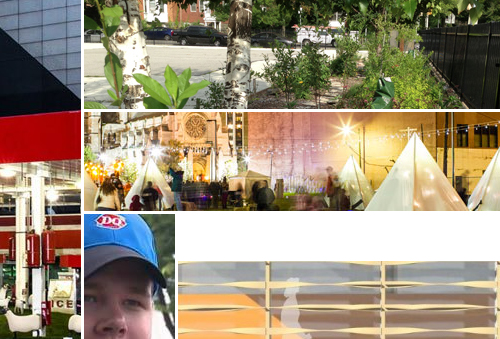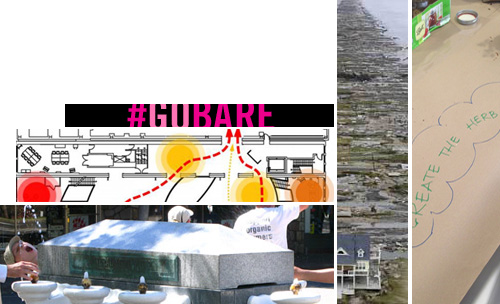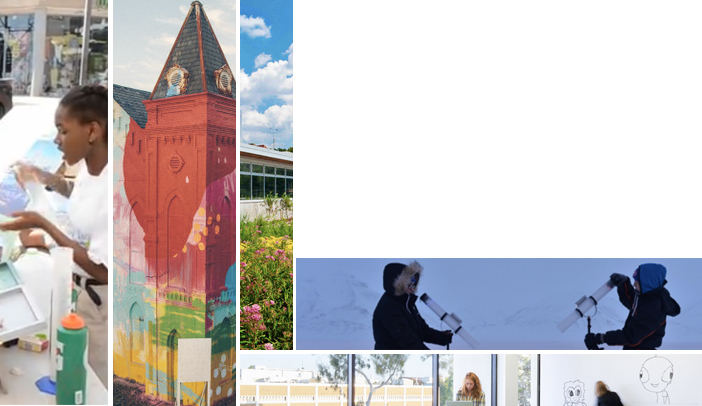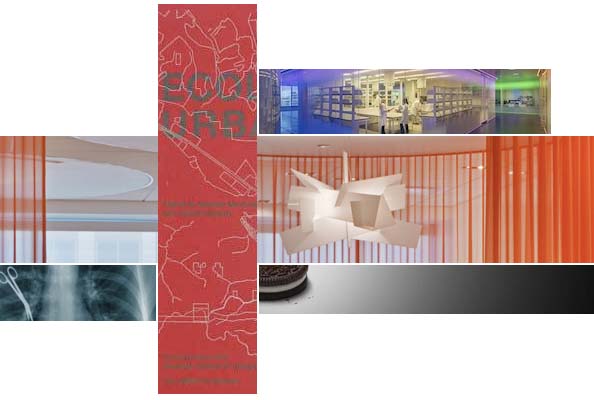Olin Studio's hope for Philly schoolyards. Dance and arts face off with blight. HOK implores architects to embrace biomimicry. High Line catalyzes spread of public art. Social media spreads a hero's story.

Transforming an urban schoolyard. Jennifer Martel, senior landscape architect for OLIN Studio, talks about her interest with the plight of urban schoolyards, and discusses a grant given to the Henry C. Lea School in West Philadelphia to install green stormwater infrastructure on its schoolyard.
This grant, one of two awarded to public schools in Philadelphia by the Philadelphia Water Department, will help to pay for large rain gardens, curb bump-outs, and an infiltration basin under a new basketball court. The hope is that these moves will catalyze the transformation of nearly an acre of asphalt into a vibrant, fun, ecological and educational green space for students and the community.
Via OLIN Studio
Creative placemaking reframes cities. Sheena Lyonnais, managing editor of Yonge Street, examines how the arts are revitalizing neighborhoods and boosting economies across the country.
Denver dance company Wonderbound moved into an old used car dealership near central downtown, a blighted property that was surrounded by three homeless missions and a notorious park crawling with drug dealers. Wonderbound, who’s mission is to transform the building into a hub for artists to rehearse and perform, turned the building into Junction Box. Passersby stop to watch dancers perform through large open garage doors.
Via CEOs for Cities
Emulating earth’s creatures. Thomas Knittel, a senior principal – design in HOK’s Los Angeles studio, looks at how architects can bridge the gap between the built and natural environments through biomimicry, an emerging field of study urging emulation of naturally occurring principles and processes.
Designers and architects at HOK, have been collaborating with Biomimicry 3.8 biologists for several years. They work together to determine what ecologies of place can tell us about the way we design, build and interact so we can offset the impact of our buildings. “This new design approach could do more than change the way our cities look and feel. It can change the way we view ourselves in relation to the Earth. Rather than remaining part of the problem, architects have the power to lead this dramatic shift in perspective and move us closer to a new sustainable future.” – Thomas Knittel
Via HOK Life
Public art on the High Line. The High Line has been adding interesting art along its length and on the billboards facing the linear park. Public art seems to be spreading outwards into neighboring Chelsea, a long-time destination for pricey galleries.
One exhibition is a former gas station on 10th Avenue that has been turned into Sheep Station, a surrealist sculptural landscape. The sheep were created by French artist François-xavier Lalannen, who died in 2008. This piece is the largest collection of Lalanne’s iconic “moutons.”
Via The Dirt
Social Media
Hailed a hero. A Minnesota Dairy Queen manager has been swarmed with dozens of offers, hundreds of comments and an influx of business and hundreds of phone calls – including one from Warren Buffett, after a story about his courageous defense of a blind man went viral on Reddit. Joey Prusak saw a woman steal $20 from a blind customer at the Dairy Queen where he works. So he gave the man his own cash. An impressed customer wrote about the incident in an email, which was printed out and stuck up on the Dairy Queen's wall — and then it went viral.
Via CBS Minnesota





 Preserving and maintaining Wright. An app for ecological urbanism. Soaking it up in Philly. Balancing design and value.
Preserving and maintaining Wright. An app for ecological urbanism. Soaking it up in Philly. Balancing design and value.